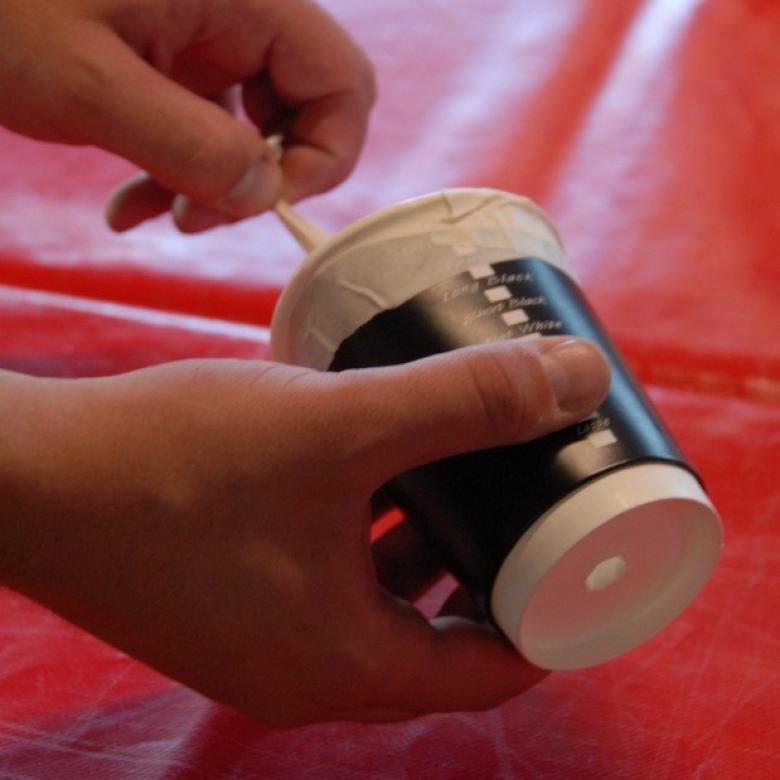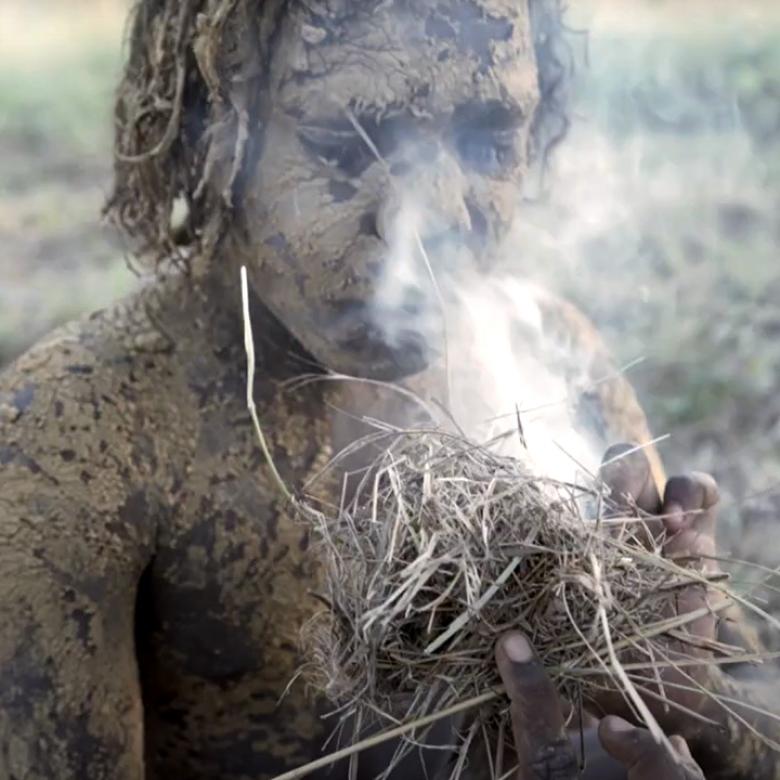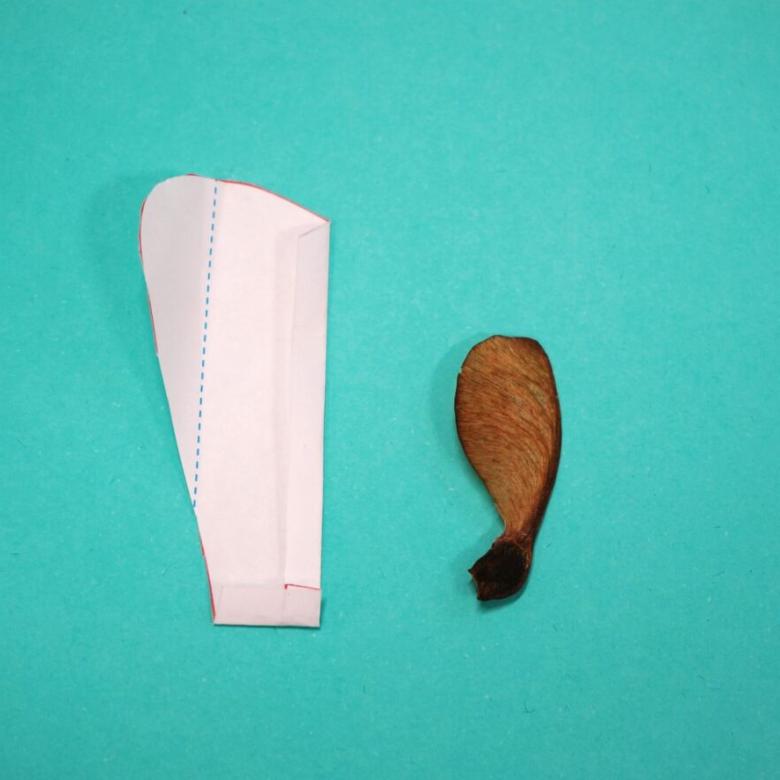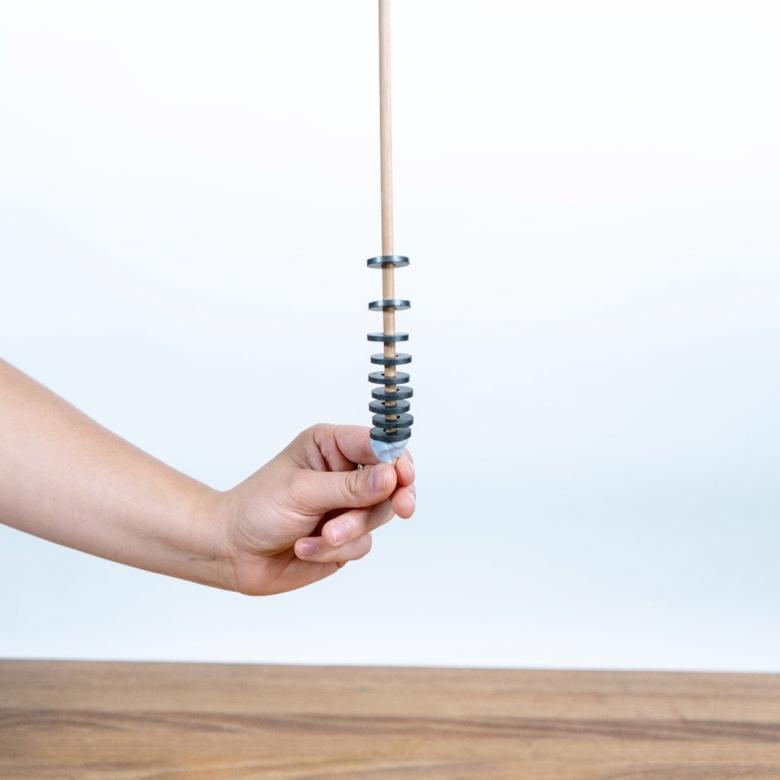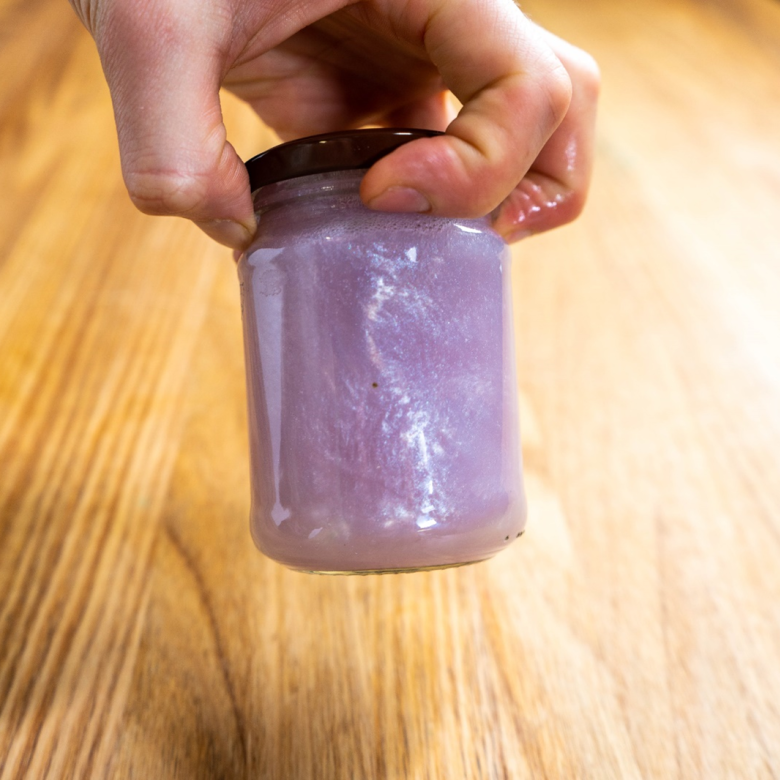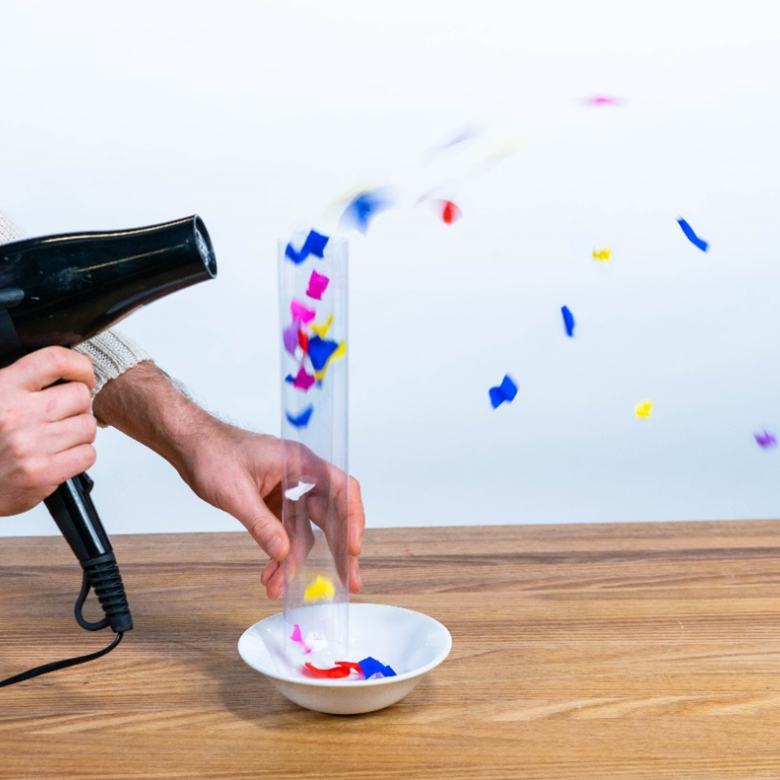You’ll need
- A balloon – not blown up
- A paper coffee cup (corrugated or reinforced cups work best)
- Scissors
- Masking tape
- A pen or pencil
- Candle and matches (optional)
- Small bits of paper or confetti (optional).
What to do
- Gather your materials on a flat surface.
- Cut off the top of the round part of the balloon and keep the section with the neck (the part you blow into the balloon). Make a knot in the neck of the balloon.
- Stretch the open end of the balloon over the top of the paper cup, being careful not to squish the cup. Try to align the neck of the balloon with the middle of the cup. You may need to stick the balloon to the cup with masking tape.
- Use the pen or pencil to poke a 1 cm hole in the middle of the bottom of the cup. You have now built your air cannon.
- Stretch the balloon away from the cup. Quickly let it go. Air should shoot out of the hole in the cup. Ask a friend or sibling to put their hand in front of your air cannon to check if air is coming out.
- You can see the effects of the air cannon by shooting it at some small bits of paper or at a candle flame.
Questions to ask
What happens when you pull back on the balloon then let it go? Can you think of ways to make more air come out? What if you use a bigger balloon?
Does the size of the hole in the cup make a difference? Try making the hole bigger or smaller.
What happens when you shoot your air cannon at a lit candle or some small bits of paper?
What’s happening
Gases move to make the pressure the same everywhere. Air is a type of gas. Pulling the balloon back makes more space inside the cup and the balloon. This makes the pressure inside go down. Air then rushes in until the pressure inside is the same as the pressure outside. Letting go of the balloon squashes the air in the cup and the balloon into a smaller space. The pressure inside goes up, so air rushes out through the hole.
Now is when things get a bit more complicated!
When the air comes out of the small hole, it doesn’t all travel in a straight line. Instead, some of the air starts to spin. This is because:
- friction causes the air near the edges of the hole to go slower than the air nearer the centre of the hole
- the air outside the cup resists moving away – it doesn’t want to move, but is forced to move away by the air coming out of the cup.
These effects combine to make some of the air follow a curved path. The result is a spinning ring of air, shaped like a doughnut. This is called a toroidal vortex or a vortex ring. Water can also make vortex rings.
Did you know
Vortexes form when air or fluids flow. You usually only notice them when you can see particles moving in the fluid, or have different coloured fluids mixing. You may have seen vortexes as smoke rings, which can be blown by volcanoes. Toroidal vortices can also be created under water. Dolphins create and then play with these underwater rings.
Scientists have recently used toroidal vortices to help explain how some ocean waves behave strangely. Understanding vortexes can also help us develop more efficient underwater travel.

